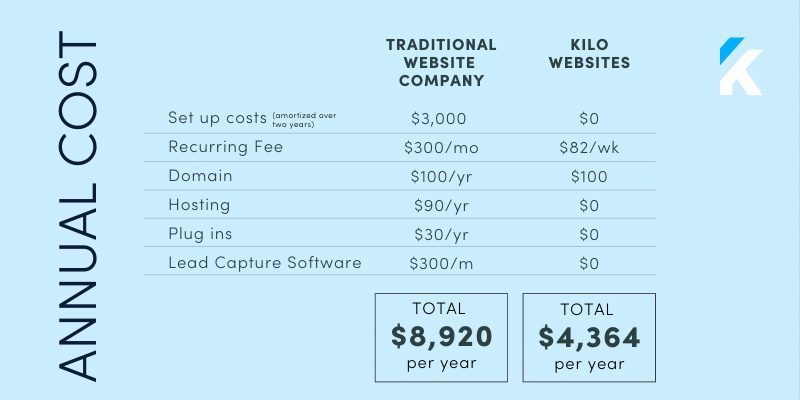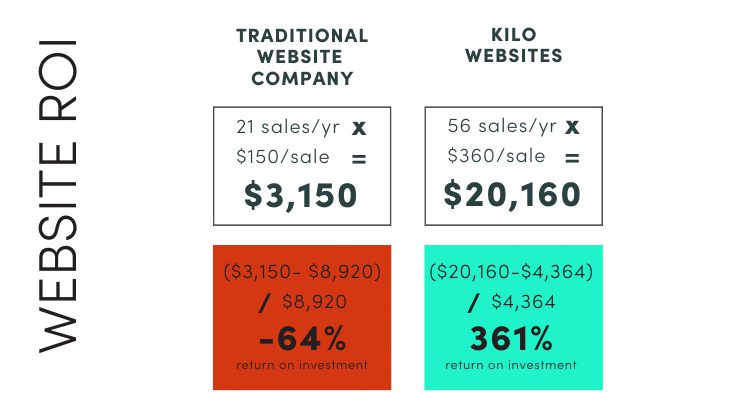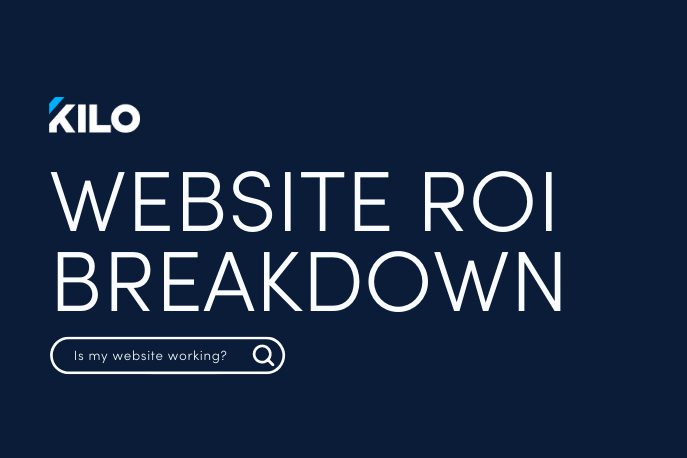By Kaleda Connell, Certified Two-Brain Business Mentor and CEO of Kilo
“I don’t know if my website is working”—I hear this all the time.
As a gym owner, you must know the return on investment (ROI) of your marketing efforts. Your website is one of the most overlooked and yet essential marketing assets you have.
The point of a modern website is to entice visitors to become customers. For most gyms, the No. 1 goal should be to increase “opt-ins”: when a user enters contact information into the site, indicating interest in the business and its services. An increase in opt-ins will give a gym owner more leads to nurture into paying members.
If the goal is more opt-ins, we can measure website performance by determining the return on investment in the website. Simply put: Does the money spent on the website result in more sales?
Website ROI can be estimated like this:
ROI = (Money generated from the site – Cost of investment)
/ Cost of Investment
Cost of investment is the total amount spent on creating and managing the site over a chosen time frame—we’ll use one year here.
In order to determine your ROI, you will need to:
1. Determine your website costs.
2. Monitor the sales funnel: Track the number of people who become paying members (sales).
3. Determine customer value: the front-end revenue expected from a sale.
Calculations
Most gyms choose a website company that charges a large up-front fee and requires additional software to collect leads.
Setup costs: $3,000 (amortized over two years, so $1,500 per year)
Monthly fee: $300
Domain: $100 per year
Hosting: $90 per year
Plug-ins: $30 per year
Lead-capture software: $300 per month
Total spent in year 1: $8,920
Let’s assume the site gets 100 visits each month. Average opt-in rates range from about 1 to 5 percent—but this figure varies widely depending on website performance and the quality and placement of the opt-in form. Let’s assume that the average gym website has an opt-in rate of 2.5 percent. With 100 visits a month, that’s 30 leads per year—and we will pretend that every lead eventually books an appointment (this never happens).
The average Two-Brain Business gym has a conversion rate of about 70 percent. If we use this figure—which is based on mentorship and sales training—the gym will make 21 new sales. We’ll also assume each person is sold a CrossFit membership of $150 on the front end. Here’s the math:
21 sales per year x $150 per sale = $3,150
Now let’s plug that into the ROI formula:
($3,150 – $8,920) / $8,920 = -64% ROI
That’s bad. This gym is losing money through its website.
When Websites Make Money
At Kilo, we’ve talked to thousands of gym owners about their websites. While a lot of sites look nice, they are actually costing the owner money and opportunities. In fact, most gym owners have no idea how many leads they are getting, if any. Similarly, they have no one to help them measure traffic, optimize performance or meet their sales and revenue goals.
Kilo sites are built to change that because we know ROI is critical for all gym owners and especially Two-Brain clients, who track and analyze metrics relentlessly.
Here’s a real example of Kilo website ROI:
Setup costs: $0
Weekly fee: $82
Domain: $100
Hosting: $0
Plug-ins: $0
Lead-capture software: $0
Total annual spend: $4,364

On Kilo sites, we’ve seen opt-in rates well above the 1-5 percent range, but we’ll use just 80 leads per year for our comparison. For perspective, one of our clients gets 300 visits a month at a 6.7 percent opt-in rate, which is 240 leads a year through its website—so 80 leads is not an uncommon number.
With 80 leads and a 70 percent close rate, the gym will make 56 sales. Many gyms—and especially Two-Brain gyms—sell intro packages well above the $150 mark. We’ll use $360 in front-end revenue for our calculations. Again, this number is not uncommon. The gym that gets 240 leads a year with a 6.7 percent opt-in rate sells an intro package worth $360, and many Two-Brain gyms sell intro packages above $400 with the help of a mentor.
So 56 sales a year at an average of $360 each generates $20,160 in revenue.
Let’s plug that into the ROI formula:
($20,160- $4,364) / $4,364 = $361% ROI
Here’s a summary:

Remember: If your intro package is worth more than $360, the ROI skyrockets. And if you get more than 80 leads, ROI jumps again. Finally, if you learn to sell and improve your close rate, ROI improves yet again. (Two-Brain has specific tactics you can use to improve package value, lead generation and close rates.)
Run the Numbers and Demand ROI
If you aren’t sure if your website is working for or against you, you must get a Google Analytics account and track your traffic and your lead generation.
Plug your numbers into the ROI formula I presented above and see if you’re losing money or making money on your website.
Then talk to your website provider about your business goals and expectations. If you still don’t get the results you’re after, switch providers.
Remember this: A website isn’t supposed to be a work of art. It’s supposed to be a critical part of your marketing funnel, and it should actually make money for your fitness business.

